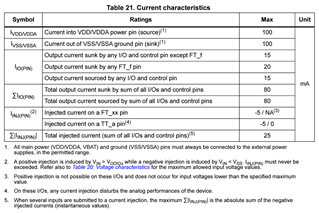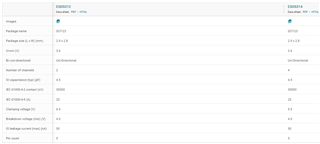Other Parts Discussed in Thread: AM26C31, TCA9803, TLV9062, TMP61-Q1, ESDS314, ESDS312
Hello,
We need to protect GPIO pins from long cables (Inductive Proximity sensor signal) coming from around motors in industrial environment.
Apart from using Digital Isolator, we are considering a lower cost & relatively balanced risk solution such as TSD05C for clamping the surge (61000-4-5 Class 2) & EFTs (61000-4-4 Class 4)
I am unsure about:
- Higher clamping voltage of the TSD05C which is +14V
- Higher breakdown voltage of the TSD05C which is +/-8V
Both of the above key voltage levels are well above the AMR of the MCU GPIO pins. Now I do understand that the AMR is rated for constant DC voltage & transient we might be able to have a slightly higher voltage - however I am unsure how high can we work with, specifically will this TSD05C be sufficient for a typical MCU GPIO protection given it's Clamping voltage & the Breakdown voltages?
Kindly suggest, if not which other protection can we use?





